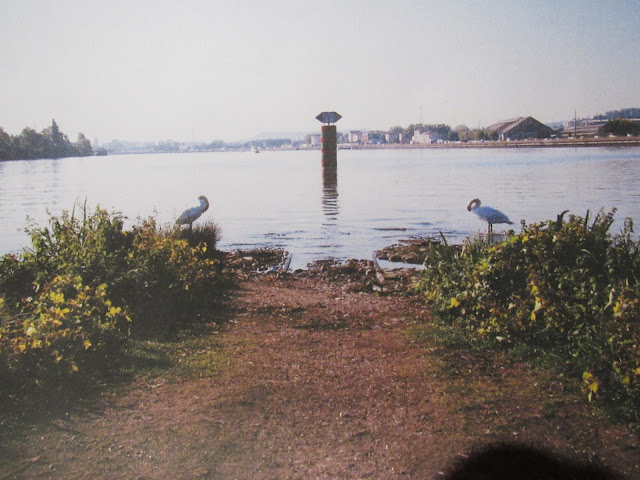There are stained glass windows all around the church and based on the theme of the Blessed Sacrament. Look at the following windows. See the priest consecrating the host just below the crucifix:
It is a magnificent thing to attend Mass in these old churches. I can feel the history in them. also think about the people who made the church the center of their lives.
I also think about Ken Follett's book, Pillars of the Earth, which tells the story of a medieval cathedral builder and his life.
And, much to my surprise, I thought the French were largely non-practicing Catholics and that the church went empty. Wrong! These churches are filled with people on Sundays. One church I often visit during the week, St. Bonaventure Church is filled, especially on Fridays! One of the reasons is that we are in Lent and the church provides an exposition of the Blessed Sacrament after the 4 p.m. Mass. The people process behind the priest who carries the Blessed Sacrament in a monstrance and then places it on one of the side altars so that the people can pray in front of it.
Here is Saint Bonaventure's Church, which is near my language school and on my way home.
Construction of St. Bonaventure Church was begun in 1325 and completed in 1494. During the French Revolution in 1790, the church was spared from destruction but it was turned into a granary. The building was re-established as a church in 1806.
Here's the interior of St. Bonaventure. Sometimes I sit in the pew and imagine piles of grain. I also think about how this church's history is a reminder that the Church endures even when things look bleak. We have to thank God for that--and for tremendously beautiful buildings like St. Bonaventure's!
The churches in Lyon are also interesting because there is usually a beggar, a woman, at the door just before Mass. Sometimes she has a little child with her. I usually don't give out money to beggars either in the USA or anywhere in the world where I've traveled, however, the sisters have taught me something. They pick a particular beggar and give to her. They also talk with her a bit and look both the woman and the child in the eye. If the child is drawing or doing something, they usually comment on it. This is a Christian thing to do, so I followed suit. Giving a little money to a poor person at the door of a church is a decent thing to do.
Another church I visited this month was St. Jean's Cathedral. It is the seat of the Bishop of Lyon. St. Jean's is a 12th century Romanesque and Gothic cathedral that took over four centuries to build. Saint Jean Baptiste is famous for its beautiful original stained-glass windows.
The interior of the cathedral is not as impressive as the architecture outside. However, it is praised for its simplicity and feeling of austerity that it imparts. This is the church where Sister Rose served as a parish minister for 10 years. People still remember and appreciate her and say hello to her personally.
Every week a choir from a different part of the diocese sings for the congregation. The sisters and I visited the cathedral on Week 4 of Lent and had a great choir to listen to for Mass.









































